
The Hidden Gems of Nicaragua: The Corn Islands
Discover the Corn Islands in Nicaragua: A Caribbean paradise with pristine beaches, vibrant coral reefs, and a rich Creole culture, perfect for a tranquil tropical getaway.
Nestled in the Caribbean Sea, the Corn Islands are a pair of serene and picturesque islands located off the coast of Nicaragua. These islands, known as Big Corn Island and Little Corn Island, offer a unique blend of natural beauty, vibrant culture, and rich history that make them a must-visit destination for travelers seeking an off-the-beaten-path experience. Big Corn Island, the larger of the two, is known for its laid-back atmosphere and friendly locals. Here, you can explore pristine beaches, crystal-clear waters, and lush tropical landscapes. The island's main town, Brig Bay, offers a variety of local eateries, shops, and accommodations that cater to all budgets. Don't miss out on visiting the island's key attractions, such as the stunning Long Bay Beach and the historic Quinn Hill Lighthouse, which offers breathtaking panoramic views of the island and its surroundings. Little Corn Island, just a short boat ride away from Big Corn Island, is a smaller, more secluded paradise. With no cars and only a few rustic accommodations, this island is perfect for those looking to completely unwind and disconnect from the hustle and bustle of everyday life. Explore the island's many hidden coves, snorkel in its vibrant coral reefs, or simply relax in a hammock under the shade of a palm tree. The island also boasts a variety of charming local restaurants and bars, where you can savor delicious seafood dishes and refreshing tropical cocktails. The Corn Islands are not only a haven for beach lovers and adventure seekers but also a place where you can immerse yourself in the local culture. The islands' Creole heritage is evident in the warm hospitality of its residents, the lively music, and the flavorful cuisine. Whether you're looking to relax on the beach, explore underwater wonders, or experience the rich local culture, the Corn Islands in Nicaragua offer something for everyone.
Local tips in Corn Islands
- Visit during the dry season, from January to May, for the best weather and calmest seas.
- Bring enough cash, as ATMs are limited and credit cards are not widely accepted.
- Pack light and breathable clothing, as the tropical climate can be quite warm and humid.
- Invest in a good pair of water shoes to protect your feet while exploring the coral reefs.
- Try the local seafood dishes, especially the lobster, which is a regional specialty.
- Respect the local culture and traditions by learning a few Creole phrases and engaging with the friendly residents.
The Hidden Gems of Nicaragua: The Corn Islands
Nestled in the Caribbean Sea, the Corn Islands are a pair of serene and picturesque islands located off the coast of Nicaragua. These islands, known as Big Corn Island and Little Corn Island, offer a unique blend of natural beauty, vibrant culture, and rich history that make them a must-visit destination for travelers seeking an off-the-beaten-path experience. Big Corn Island, the larger of the two, is known for its laid-back atmosphere and friendly locals. Here, you can explore pristine beaches, crystal-clear waters, and lush tropical landscapes. The island's main town, Brig Bay, offers a variety of local eateries, shops, and accommodations that cater to all budgets. Don't miss out on visiting the island's key attractions, such as the stunning Long Bay Beach and the historic Quinn Hill Lighthouse, which offers breathtaking panoramic views of the island and its surroundings. Little Corn Island, just a short boat ride away from Big Corn Island, is a smaller, more secluded paradise. With no cars and only a few rustic accommodations, this island is perfect for those looking to completely unwind and disconnect from the hustle and bustle of everyday life. Explore the island's many hidden coves, snorkel in its vibrant coral reefs, or simply relax in a hammock under the shade of a palm tree. The island also boasts a variety of charming local restaurants and bars, where you can savor delicious seafood dishes and refreshing tropical cocktails. The Corn Islands are not only a haven for beach lovers and adventure seekers but also a place where you can immerse yourself in the local culture. The islands' Creole heritage is evident in the warm hospitality of its residents, the lively music, and the flavorful cuisine. Whether you're looking to relax on the beach, explore underwater wonders, or experience the rich local culture, the Corn Islands in Nicaragua offer something for everyone.
When is the best time to go to Corn Islands?
Iconic landmarks you can’t miss
Arenas Beach Hotel
Experience the beauty of Corn Islands at Arenas Beach Hotel, where tropical comforts meet authentic Nicaraguan culture.
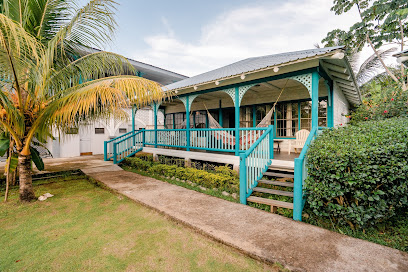
Paraiso Beach Hotel
Experience the ultimate tropical retreat at Paraiso Beach Hotel on the stunning Corn Islands, where relaxation meets adventure in a breathtaking setting.
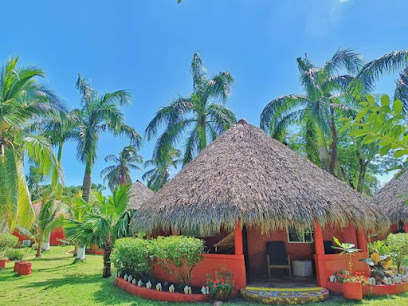
Pic-Nic Beach Hotel
Experience the serene beauty of Big Corn Island at Pic-Nic Beach Hotel, where relaxation and adventure come together in a tropical paradise.

Seaside Grill
Discover the flavors of the Caribbean at Seaside Grill on Corn Island, where fresh seafood meets stunning ocean views in a relaxed atmosphere.
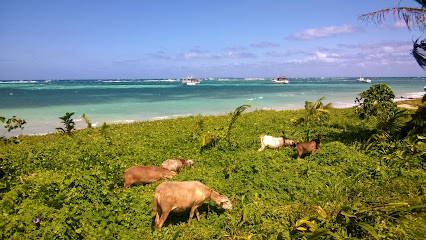
Tranquilo Cafe
Discover the flavors of paradise at Tranquilo Cafe, a delightful restaurant on Little Corn Island offering fresh seafood and stunning ocean views.
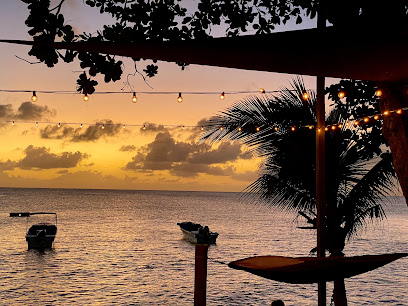
Yemaya Reefs
Experience the beauty of Little Corn Island at Yemaya Reefs, where luxury meets nature in a tropical paradise.
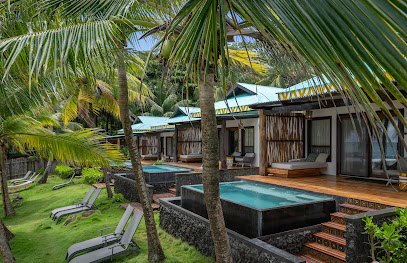
Bar & Rest Spekito's Place
Experience authentic Nicaraguan flavors at Spekito's Place on Isla Grande del Maíz, where fresh seafood meets a vibrant atmosphere.
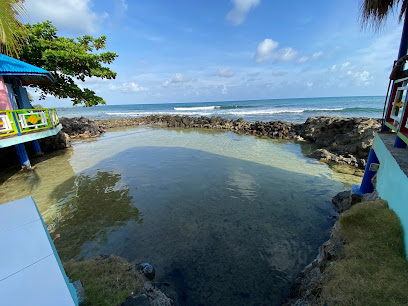
Café Desideri
Discover the delightful fusion of Italian flavors and Caribbean charm at Café Desideri on Little Corn Island.
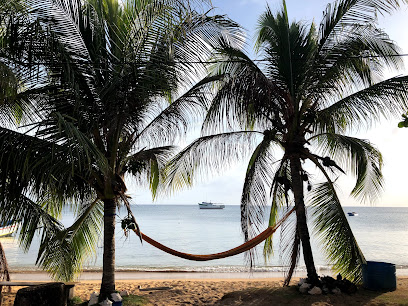
Casa Canada
Discover the enchanting charm of Casa Canada, a tropical hotel in the Corn Islands, where relaxation meets Caribbean adventure.
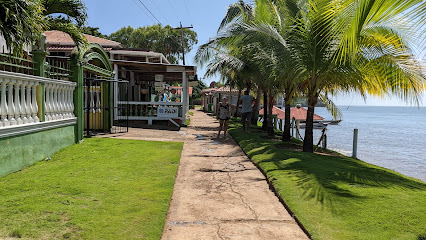
Big Corn Island
Explore the enchanting Big Corn Island in Nicaragua, where pristine beaches, vibrant culture, and thrilling adventures await every traveler.
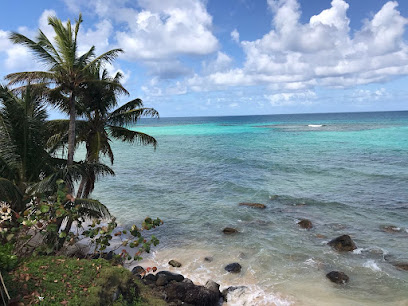
Little Corn Beach and Bungalow
Discover the serene beauty of Little Corn Beach and Bungalow, a tropical paradise blending relaxation and adventure on Little Corn Island.

Islets of Granada
Unveil the natural splendor and rich culture of the Islets of Granada, a paradise of biodiversity and serene landscapes in Nicaragua.
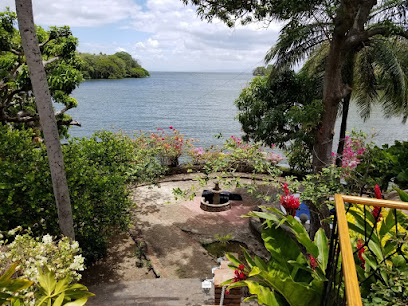
Restaurante RELAX
Experience authentic Nicaraguan flavors at Restaurante RELAX, an island culinary haven in Isla Grande del Maíz, perfect for seafood lovers and adventure seekers.
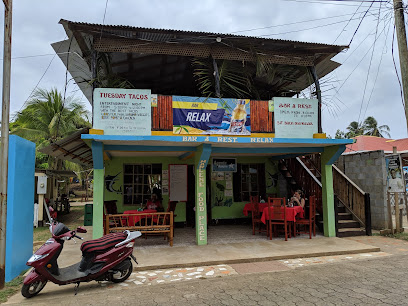
Rest El Bosque
Experience the vibrant flavors of Nicaragua at Rest El Bosque on Little Corn Island, where local ingredients meet exceptional culinary artistry.
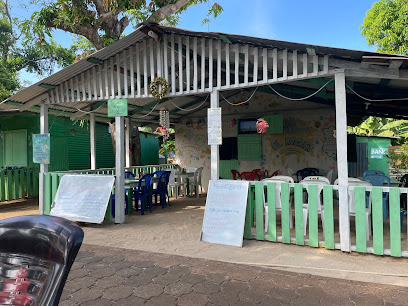
Darinia’s Fine Dinning
Experience the best of Nicaraguan cuisine at Darinia's Fine Dining, an organic restaurant in the beautiful Corn Islands, where fresh ingredients meet culinary excellence.
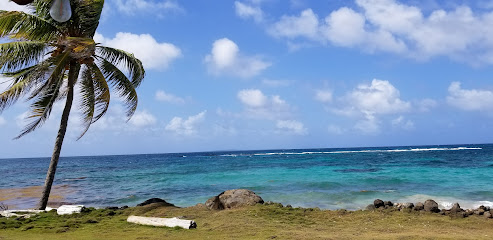
Unmissable attractions to see
Cristo de La Misericordia
Experience the breathtaking views and spiritual tranquility of Cristo de La Misericordia, the iconic statue overlooking San Juan del Sur's stunning bay.
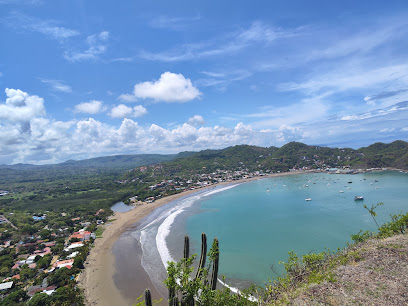
Big Corn Island
Big Corn Island: A hidden Caribbean paradise with stunning beaches, rich culture, and endless adventures awaits your discovery.
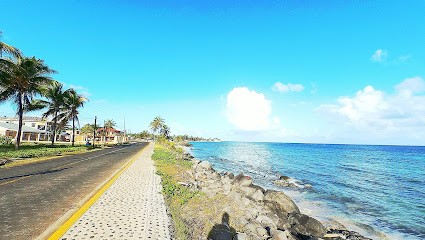
Little Corn Island
Experience the tranquil beauty of Little Corn Island, a hidden Caribbean gem with stunning beaches, vibrant marine life, and a laid-back atmosphere.
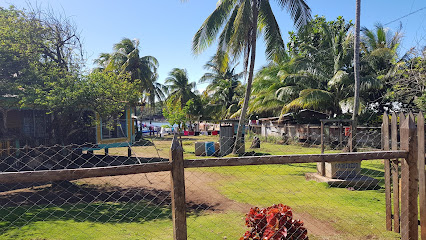
The Lighthouse
Discover the breathtaking views and serene hiking trails at the Lighthouse in Corn Islands, a hidden gem for nature lovers and adventurers.
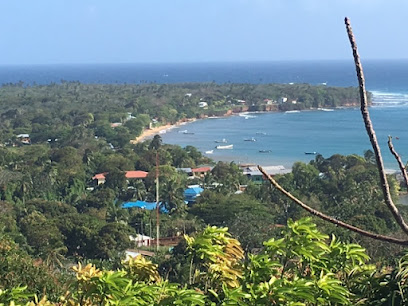
pozo antiguo Corn Islands
Discover the enchanting Pozo Antiguo on Big Corn Island, where rich cultural heritage meets stunning artistic sculptures in a serene island paradise.

Essential places to dine
Maris Daneth's Restaurant
Experience authentic Caribbean cuisine at Maris Daneth's Restaurant on Corn Island - a culinary delight not to be missed.
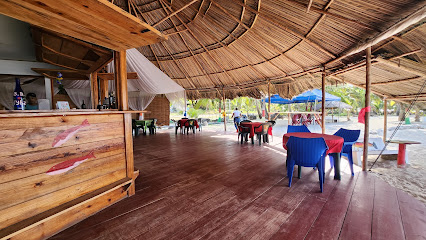
Seaside Grill
Discover fresh seafood delights at Seaside Grill on Great Corn Island – where every meal comes with breathtaking ocean views.
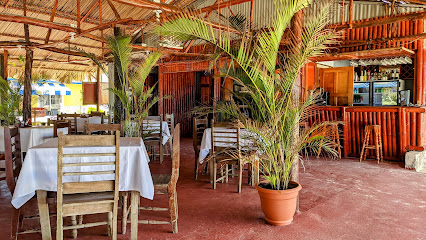
Pizzeria Italia
Experience authentic Italian pizza at Pizzeria Italia in Corn Island—where delicious flavors meet warm hospitality.
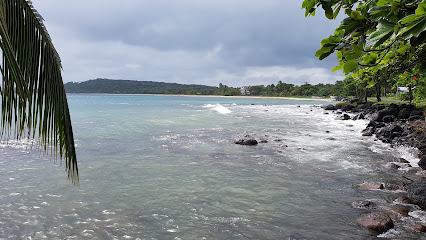
Bar & Rest Spekito's Place
Experience authentic Nicaraguan cuisine at Spekito's Place on Isla Grande del Maíz - where every meal tells a story.
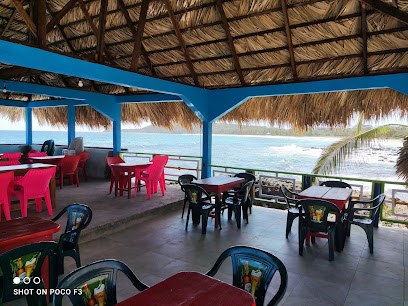
Café Desideri
Experience authentic Italian cuisine at Café Desideri on Little Corn Island, where every dish tells a story of flavor and warmth.

Restaurante RELAX
Experience authentic Nicaraguan cuisine at Restaurante RELAX on Isla Grande del Maíz - a true culinary delight in the Corn Islands.
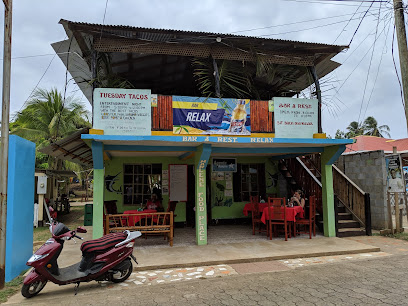
Darinia’s Fine Dinning
Discover exquisite organic cuisine at Darinia's Fine Dining in the Corn Islands—where fresh flavors meet tropical elegance.
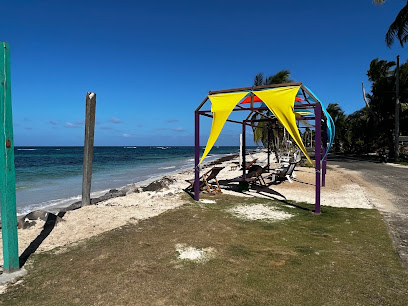
Beach Bar Por Ahí
Discover Beach Bar Por Ahí: A vibrant restaurant and bar on Corn Island offering fresh seafood delights amidst stunning Caribbean views.
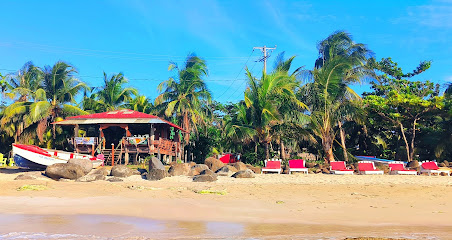
Dos Millas Seva's
Experience authentic Caribbean cuisine at Dos Millas Seva's - where flavor meets island charm in Isla Grande del Maíz.
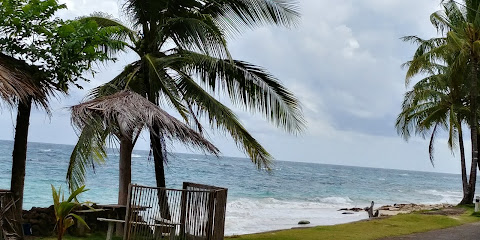
The Buccaneer
Discover culinary delights at The Buccaneer in Corn Islands – where local flavors meet oceanfront dining bliss.
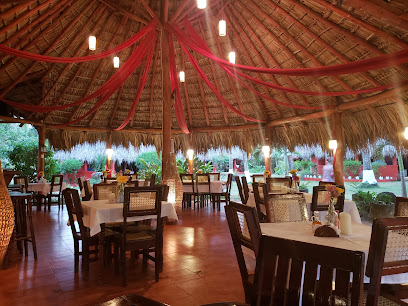
Caribbean Wave
Discover Caribbean Wave: A vibrant restaurant offering authentic flavors and stunning views in the heart of the Corn Islands.

Kiosko El Sabroson
Savor the flavors of Corn Island at Kiosko El Sabroson – where fast food meets local culinary delights.
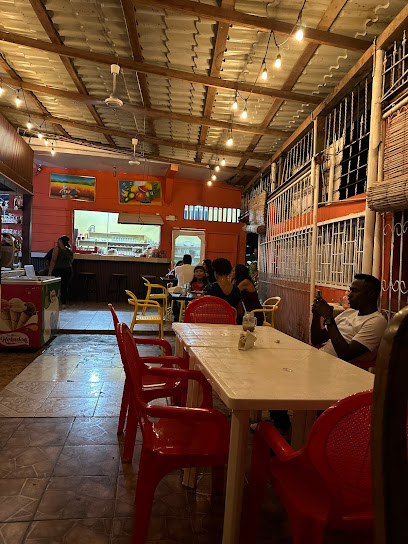
T.N.T Bar & Grill
Discover T.N.T Bar & Grill on Big Corn Island - where delicious local cuisine meets a vibrant island atmosphere.

Miss Lily
Experience delightful breakfasts at Miss Lily in Corn Islands, where every bite is a taste of paradise.
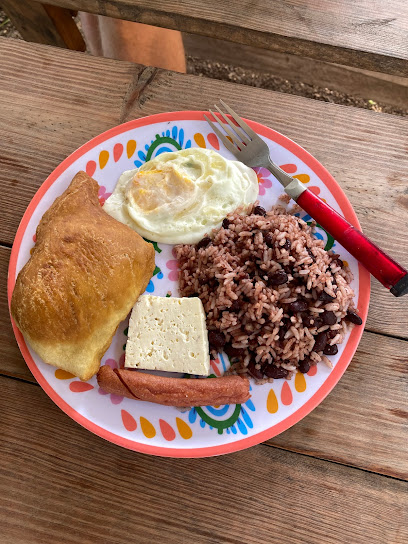
The Corner
Experience local flavors at The Corner in Corn Islands - your go-to fast food and bar destination for unforgettable meals and vibrant nightlife.
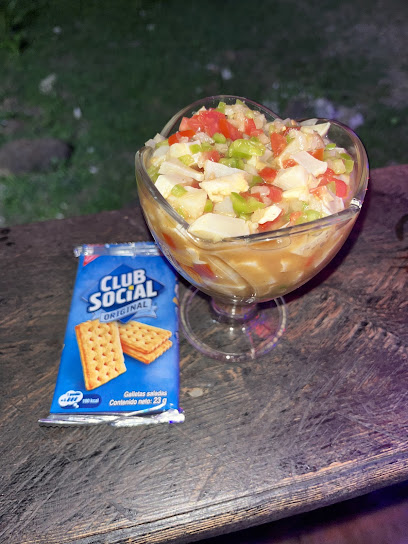
Markets, malls and hidden boutiques
Sally Peachy Store
Discover the local flavors of Corn Island at Sally Peachy Store, your go-to grocery destination for fresh produce and island essentials.
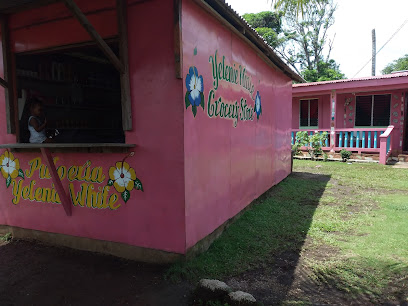
Taylor's General Store
Discover the vibrant essence of Corn Islands at Taylor's General Store, your go-to destination for local produce and essentials.
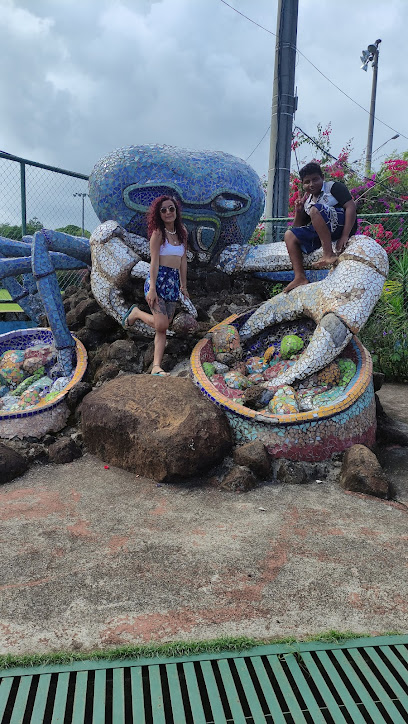
Pulperia Ruiz
Discover unique home goods and local treasures at Pulperia Ruiz in Corn Islands, where friendly service meets vibrant craftsmanship.
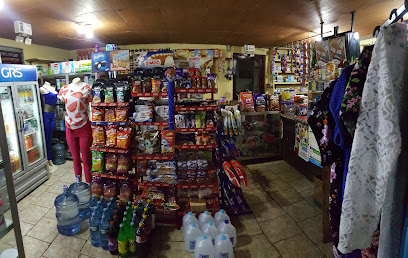
Repostería Elaskie
Experience the delightful flavors of Repostería Elaskie, a charming bakery in the Corn Islands, offering a variety of local pastries and sweet treats.
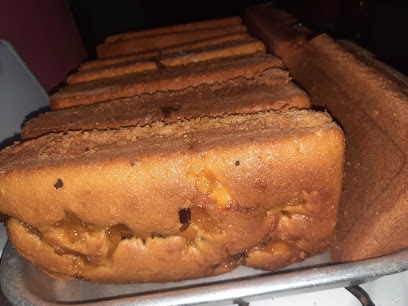
Buorn down shop
Discover the cozy ambiance and delightful brews of Buorn Down Shop, a charming coffee haven in the heart of Corn Islands.
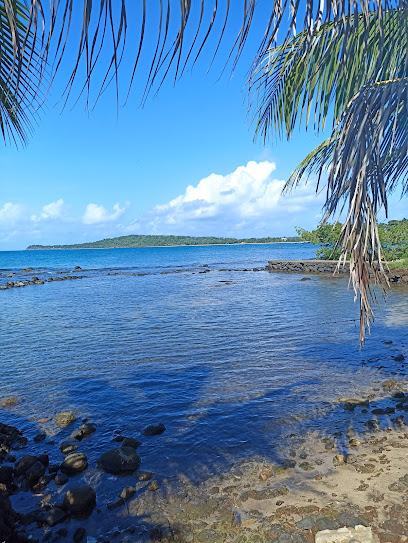
Lastenia
Explore Lastenia on Corn Island for local crafts, essentials, and a taste of vibrant island culture.
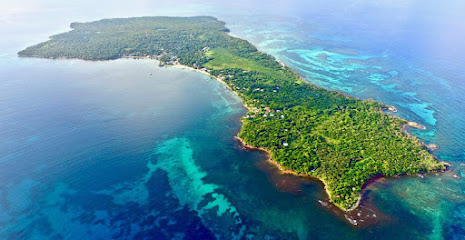
Tower Shop
Explore the Tower Shop in Corn Island for unique souvenirs and local crafts, nestled in the heart of the vibrant North End community.

La feria
Explore La Feria on Big Corn Island for unique clothing and local artisan crafts that capture the essence of Caribbean style.

Cariana's Store
Explore the essence of Corn Island at Cariana's Store, where local charm meets authentic products and unique souvenirs.
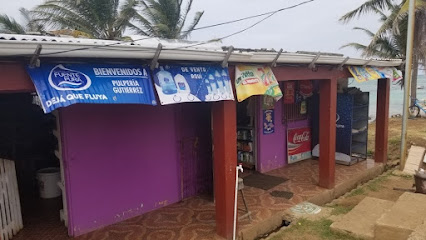
Lulu Fashion Store
Discover island-inspired fashion at Lulu Fashion Store in the stunning Corn Islands, Nicaragua - a must-visit for every traveler.

Narra Shop
Discover unique island-inspired fashion at Narra Shop in the Corn Islands, where local culture meets vibrant style and unforgettable souvenirs await.

Dwight’s Hardware Store
Explore Dwight’s Hardware Store on Corn Island - a unique glimpse into local life with essential supplies and friendly service.

BJB tienda virtual
Discover local crafts and essentials at BJB Tienda Virtual, a vibrant store in Corn Island that reflects the island's rich culture and craftsmanship.

Tienda Choice
Discover unique clothing and local crafts at Tienda Choice on Corn Island, where island culture meets vibrant fashion.
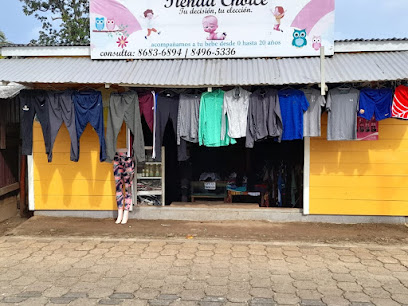
Venta de Bisuteria de Carey y Coral
Discover exquisite handcrafted jewelry made from carey and coral at Venta de Bisuteria de Carey y Coral, a gem in Corn Island.

Essential bars & hidden hideouts
Bar & Rest Spekito's Place
Experience delicious Nicaraguan flavors at Spekito's Place, a charming restaurant on Isla Grande del Maíz, perfect for every food lover.
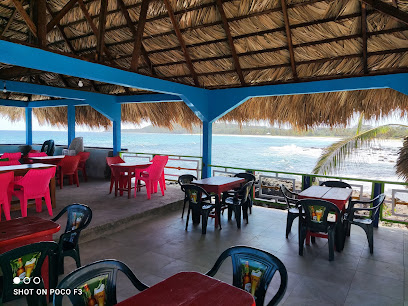
Restaurante RELAX
Experience authentic Caribbean cuisine and stunning ocean views at Restaurante RELAX on Isla Grande del Maíz.
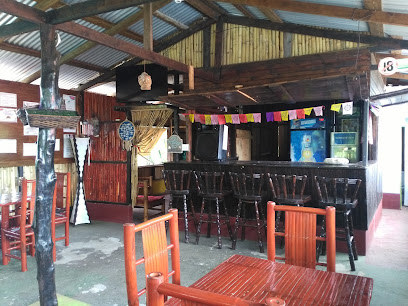
Bar Victoria's
Experience the vibrant Caribbean atmosphere at Bar Victoria's, where refreshing drinks and local flavors await in the Corn Islands.
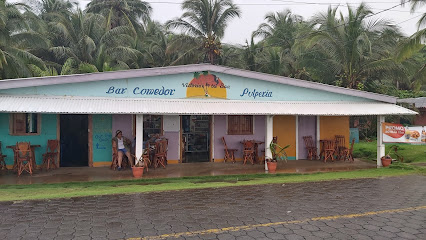
Beach Bar Por Ahí
Experience the delightful ambiance of Beach Bar Por Ahí, where tropical flavors meet stunning ocean views on Corn Island.
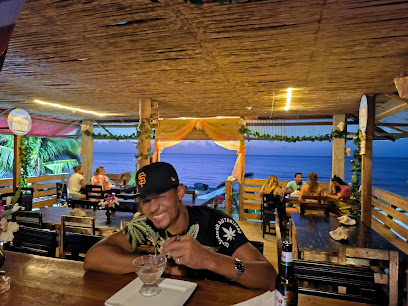
Island Style Beach Bar & Restaurant
Discover the vibrant Island Style Beach Bar & Restaurant, where tropical flavors meet stunning ocean views for an unforgettable culinary experience.
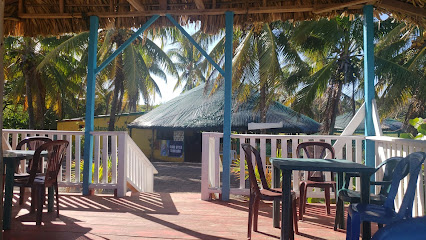
Bit Coin Island Bar
Experience the lively ambiance and refreshing drinks at Bit Coin Island Bar, a must-visit destination in the stunning Corn Islands.
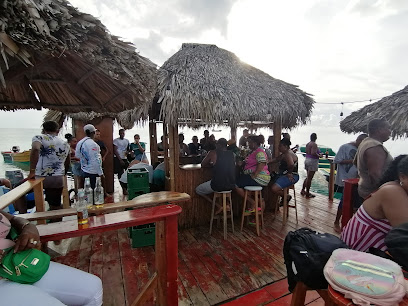
Caribbean Wave
Experience the vibrant flavors and stunning views at Caribbean Wave, a must-visit bar and restaurant in Big Corn Island.

Bar Beach Bar Vybz
Experience the vibrant atmosphere and stunning views at Bar Beach Bar Vybz, the ultimate beachside escape for tourists seeking relaxation and fun.
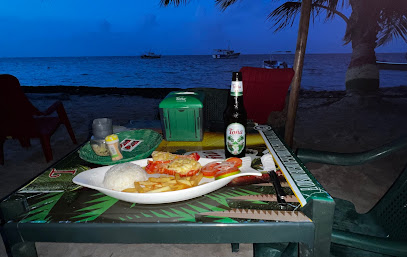
Tiki Bar
Discover the tropical charm of Tiki Bar on Big Corn Island, serving exquisite cocktails and vibrant nightlife for an unforgettable getaway.
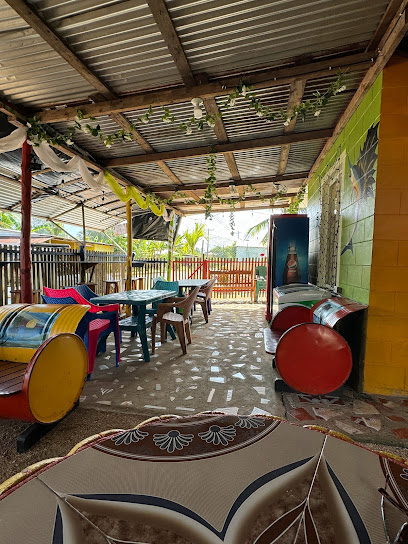
Bar & Rest The Dolphin
Experience the vibrant flavors of Corn Island at Bar & Rest The Dolphin, where fresh seafood and tropical cocktails meet stunning ocean views.
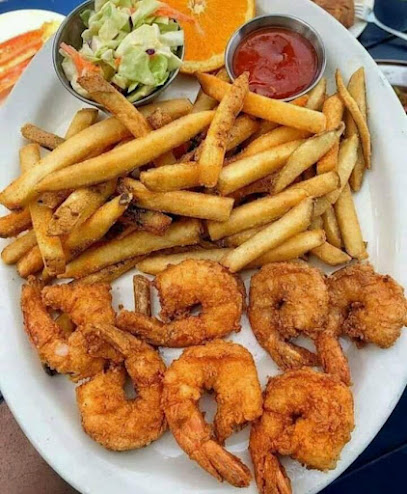
Diamond Sport Bar & Grill
Dive into the energetic atmosphere of Diamond Sport Bar & Grill on Corn Island, where delicious food meets thrilling sports in a captivating setting.
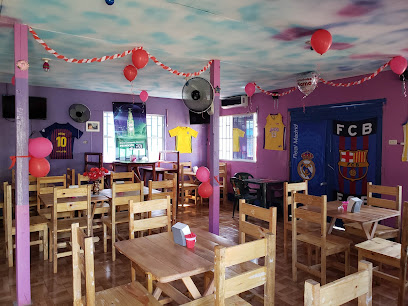
Bar banana
Experience the vibrant atmosphere and refreshing cocktails at Bar Banana, your tropical retreat on Isla Grande del Maíz, Corn Island.

Aqui me Quedo
Discover the vibrant nightlife and local culture at Aqui me Quedo, the ultimate bar experience in Corn Island, Nicaragua.
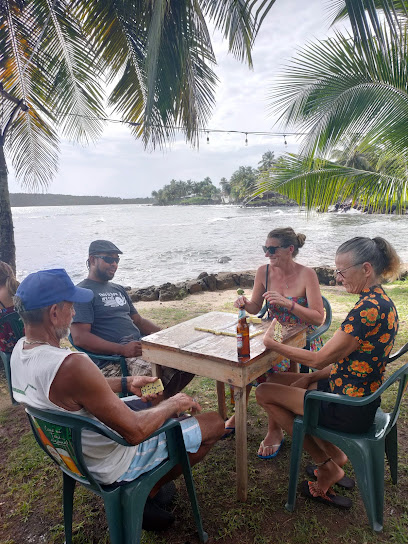
Sunset Floating Bar
Discover the enchanting Sunset Floating Bar on Big Corn Island, where tropical drinks and breathtaking sunsets await every visitor.
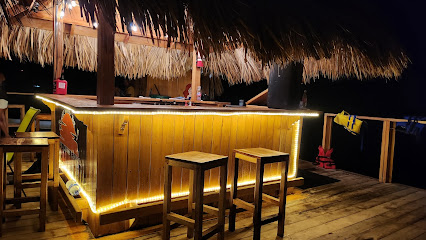
Cool Spot
Experience the vibrant flavors of Corn Island at Cool Spot, a local favorite for authentic Nicaraguan cuisine in a charming seaside setting.
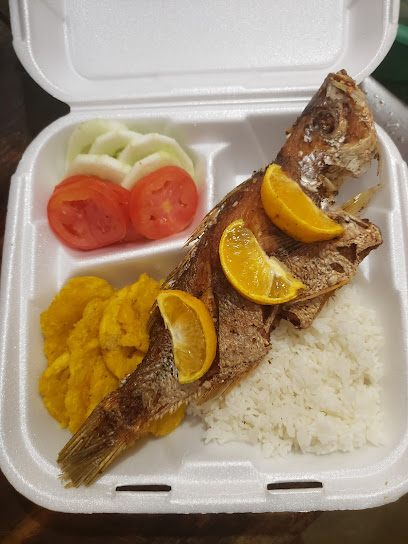
Local Phrases about Corn Islands
-
- HelloHola
[oh-lah] - GoodbyeAdiós
[ah-dee-ohs] - YesSí
[see] - NoNo
[noh] - Please/You're welcomePor favor/De nada
[por fah-vor/deh nah-dah] - Thank youGracias
[grah-see-ahs] - Excuse me/SorryPerdón/Lo siento
[pehr-dohn/loh see-ehn-toh] - How are you?¿Cómo estás?
[koh-moh ehs-tahs] - Fine. And you?Bien. ¿Y tú?
[bee-ehn. ee too] - Do you speak English?¿Hablas inglés?
[ah-blahs een-glays] - I don't understandNo entiendo
[noh ehn-tee-ehn-doh]
- HelloHola
-
- I'd like to see the menu, pleaseMe gustaría ver el menú, por favor
[meh goos-tah-ree-ah vehr ehl meh-noo, por fah-vor] - I don't eat meatNo como carne
[noh koh-moh kahr-neh] - Cheers!¡Salud!
[sah-lood] - I would like to pay, pleaseMe gustaría pagar, por favor
[meh goos-tah-ree-ah pah-gahr, por fah-vor]
- I'd like to see the menu, pleaseMe gustaría ver el menú, por favor
-
- Help!¡Ayuda!
[ah-yoo-dah] - Go away!¡Vete!
[veh-teh] - Call the Police!¡Llama a la policía!
[yah-mah ah lah poh-lee-see-ah] - Call a doctor!¡Llama a un médico!
[yah-mah ah oon meh-dee-koh] - I'm lostEstoy perdido
[ehs-toy pehr-dee-doh] - I'm illEstoy enfermo
[ehs-toy ehn-fehr-moh]
- Help!¡Ayuda!
-
- I'd like to buy...Me gustaría comprar...
[meh goos-tah-ree-ah kohm-prahr] - I'm just lookingSolo estoy mirando
[soh-loh ehs-toy meer-ahn-doh] - How much is it?¿Cuánto cuesta?
[kwan-toh kwehs-tah] - That's too expensiveEso es demasiado caro
[eh-soh ehs deh-mah-see-ah-doh kah-roh] - Can you lower the price?¿Puedes bajar el precio?
[pweh-dehs bah-hahr ehl pree-syoh]
- I'd like to buy...Me gustaría comprar...
-
- What time is it?¿Qué hora es?
[keh oh-rah ehs] - It's one o'clockEs la una en punto
[ehs lah oo-nah ehn poon-toh] - Half past (10)Las diez y media
[lahs dyehs ee meh-dee-ah] - MorningMañana
[mah-nyah-nah] - AfternoonTarde
[tahr-deh] - EveningNoche
[noh-cheh] - YesterdayAyer
[ah-yehr] - TodayHoy
[oy] - TomorrowMañana
[mah-nyah-nah] - 1Uno
[oo-noh] - 2Dos
[dohs] - 3Tres
[trehs] - 4Cuatro
[kwah-troh] - 5Cinco
[seen-koh] - 6Seis
[sehs] - 7Siete
[syeh-teh] - 8Ocho
[oh-choh] - 9Nueve
[nweh-veh] - 10Diez
[dyehs]
- What time is it?¿Qué hora es?
-
- Where's a/the...?¿Dónde está el/la...?
[dohn-deh ehs-tah ehl/lah] - What's the address?¿Cuál es la dirección?
[kwal ehs lah dee-rehk-syohn] - Can you show me (on the map)?¿Puedes mostrarme (en el mapa)?
[pweh-dehs mohs-trar-meh (ehn ehl mah-pah)] - When's the next (bus)?¿Cuándo es el próximo (autobús)?
[kwan-doh ehs ehl proh-ksee-moh (ow-toh-booce)] - A ticket (to ....)Un boleto (a ....)
[oon boh-leh-toh (ah)]
- Where's a/the...?¿Dónde está el/la...?
History of Corn Islands
-
Long before the arrival of Europeans, the Corn Islands were inhabited by indigenous peoples. The Miskito and other native groups used the islands as fishing grounds and seasonal habitation sites. Their presence is evidenced by archaeological finds and oral histories passed down through generations.
-
The Corn Islands were first documented by European explorers in the early 16th century. Spanish settlers initially claimed the islands in 1504, but they were often overlooked in favor of mainland territories. The islands later came under British influence in the 17th century, becoming part of the greater Miskito Coast protectorate.
-
During the 17th and 18th centuries, the Corn Islands became a haven for pirates and privateers. The islands' strategic location and natural harbors made them an ideal base for launching raids on Spanish galleons laden with New World treasures. The most notorious of these pirates was Captain William Dampier, who is said to have frequented the islands.
-
In the 19th century, the Corn Islands were formally recognized as part of the British protectorate over the Miskito Kingdom. This period saw increased interactions between the native Miskito people and British traders, missionaries, and settlers. The islands served as a critical point in the British-Miskito alliance, which aimed to counter Spanish influence in the region.
-
The Corn Islands were ceded to Nicaragua under the Treaty of Managua in 1860 and officially became Nicaraguan territory in 1894. This transfer marked the end of British influence in the area and initiated a new era of Nicaraguan governance. The islands’ integration into Nicaragua was formalized with the Bryan-Chamorro Treaty in 1914, which also allowed the United States to construct a naval base in the area.
-
During World War II, the United States established a military presence on the Corn Islands. The islands' strategic location in the Caribbean made them valuable for monitoring German U-boat activity and protecting Allied shipping routes. The remnants of military installations from this period can still be found on the islands today.
-
In the latter half of the 20th century, the Corn Islands began to develop as a tourist destination. Improved transportation links and the establishment of small-scale resorts attracted visitors seeking pristine beaches, diving opportunities, and a tranquil Caribbean experience. Today, tourism plays a crucial role in the local economy, with efforts being made to balance development with environmental sustainability.
-
The Corn Islands boast a rich cultural tapestry, influenced by indigenous, African, British, and Nicaraguan traditions. The islands celebrate various festivals throughout the year, including Creole Day, which showcases the unique Creole culture through music, dance, and cuisine. Local crafts, folklore, and traditional fishing practices continue to be integral parts of island life.
Corn Islands Essentials
-
The Corn Islands, consisting of Big Corn Island and Little Corn Island, are located off the Caribbean coast of Nicaragua. To get there, you can take a domestic flight from Managua to Big Corn Island, which takes about 1.5 hours. La Costeña is the main airline operating this route. From Big Corn Island, you can take a panga (small motorboat) to Little Corn Island, which takes approximately 30-40 minutes. Alternatively, you can opt for a ferry from Bluefields to Big Corn Island, although this option takes longer and is subject to weather conditions.
-
On Big Corn Island, taxis and tuk-tuks are the primary forms of transportation and are relatively inexpensive. You can also rent bicycles or golf carts to explore the island at your own pace. Little Corn Island does not have motorized vehicles, so be prepared to walk or rent a bicycle. The islands are small enough that most destinations are within a comfortable walking distance.
-
The official currency in Nicaragua is the Nicaraguan Córdoba (NIO). U.S. dollars are widely accepted, especially in tourist areas. Credit cards are accepted in some hotels and restaurants, but it's advisable to carry cash, particularly for smaller establishments. There are a few ATMs on Big Corn Island, but they can be unreliable, so it's wise to bring sufficient cash with you.
-
The Corn Islands are generally safe for tourists, but standard precautions should always be taken. Petty theft can occur, so keep an eye on your belongings and avoid displaying valuables. Walking alone at night is not recommended, especially in secluded areas. While there are no specific high-crime neighborhoods targeting tourists, always stay vigilant and aware of your surroundings.
-
In case of emergency, dial 118 for police assistance and 128 for medical emergencies. Big Corn Island has a small hospital and several clinics, while Little Corn Island has a health center. It's advisable to have travel insurance that covers medical emergencies. For minor health issues, there are pharmacies on Big Corn Island where you can purchase over-the-counter medications.
-
Fashion: Do wear lightweight, breathable clothing suitable for tropical climates. Don't wear revealing clothing, especially when visiting local communities. Religion: Do respect local customs and traditions. Public Transport: Do negotiate taxi fares before starting your journey. Don't expect public transport on Little Corn Island. Greetings: Do greet people with a friendly 'Hola' or 'Buenos días'. A handshake is also common. Eating & Drinking: Do try local dishes like 'rundown' (a coconut milk-based stew) and fresh seafood. Don't drink tap water; opt for bottled water instead.
-
To experience the Corn Islands like a local, visit the local markets to buy fresh produce and handmade crafts. Engage with the friendly locals, who are often willing to share stories about the islands' history and culture. Don't miss out on local festivals and events, which offer a glimpse into the vibrant island life. For a unique experience, take a snorkeling or diving trip to explore the stunning coral reefs surrounding the islands.
Trending Landmarks in Corn Islands
Nearby Cities to Corn Islands
-
Things To Do in San Jose
-
Things To Do in Puerto Viejo
-
Things To Do in Monteverde
-
Things To Do in Ometepe
-
Things To Do in Liberia
-
Things To Do in Rivas
-
Things To Do in Granada
-
Things To Do in San Juan del Sur
-
Things To Do in Bocas del Toro
-
Things To Do in Guanacaste
-
Things To Do in Manuel Antonio
-
Things To Do in Masaya
-
Things To Do in Jaco
-
Things To Do in Jinotega
-
Things To Do in Managua










